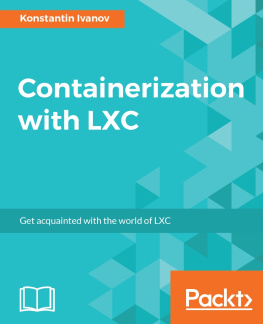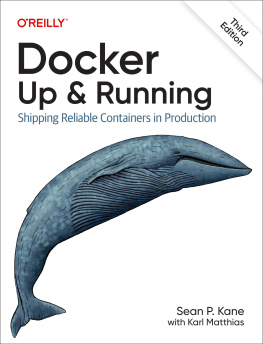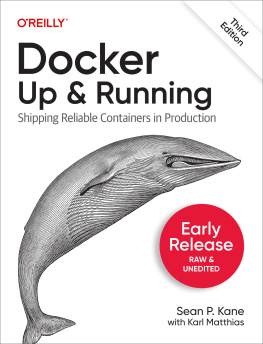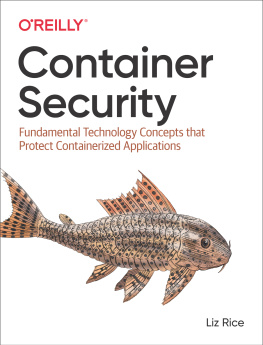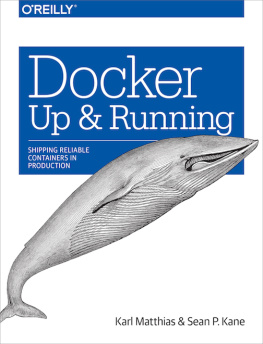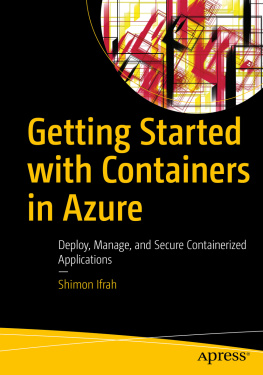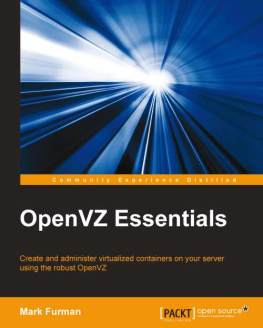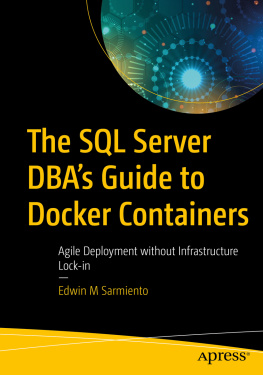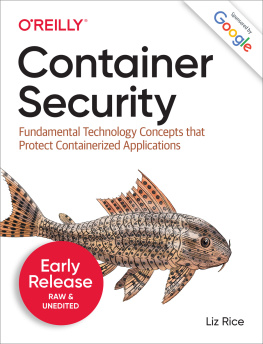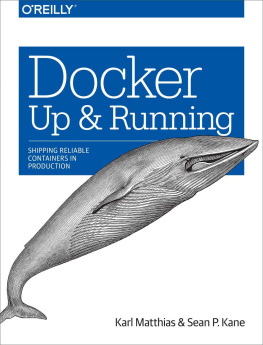Containerization with LXC
Copyright 2017 Packt Publishing
All rights reserved. No part of this book may be reproduced, stored in a retrieval system, or transmitted in any form or by any means, without the prior written permission of the publisher, except in the case of brief quotations embedded in critical articles or reviews.
Every effort has been made in the preparation of this book to ensure the accuracy of the information presented. However, the information contained in this book is sold without warranty, either express or implied. Neither the author, nor Packt Publishing, and its dealers and distributors will be held liable for any damages caused or alleged to be caused directly or indirectly by this book.
Packt Publishing has endeavored to provide trademark information about all of the companies and products mentioned in this book by the appropriate use of capitals. However, Packt Publishing cannot guarantee the accuracy of this information.
First published: February 2017
Production reference: 1220217
Published by Packt Publishing Ltd.
Livery Place
35 Livery Street
Birmingham
B3 2PB, UK.
ISBN 978-1-78588-894-6
www.packtpub.com
Credits
Author Konstantin Ivanov | Copy Editor Tom Jacob |
Reviewer Jay Payne | Project Coordinator Kinjal Bari |
Commissioning Editor Kartikey Pandey | Proofreader Safis Editing |
Acquisition Editor Mansi Sanghavi | Indexer Mariammal Chettiyar |
Content Development Editor Radhika Atitkar | Graphics Kirk D'Penha |
Technical Editors Devesh Chugh Bhagyashree Rai | Production Coordinator Aparna Bhagat |
About the Author
Konstantin Ivanov is a Linux systems engineer, an open source developer, and a technology blogger who has been designing, configuring, deploying, and administering large-scale, highly available Linux environments for more than 15 years.
His interests include large distributed systems and task automation, along with solving technical challenges involving multiple technology stacks.
Konstantin received two MS in Computer Science from universities in Bulgaria and the United States, specializing in system and network security and software engineering.
In his spare time, he loves writing technology blogs and spending time with his two boys. He can be reached on LinkedIn at https://www.linkedin.com/in/konstantinivanov or on his blog at http://www.linux-admins.net/.
About the Reviewer
Jay Payne has been a database administrator 5 at Rackspace for over 10 years, working on the design, development, implementation, and operation of storage systems.
Previously, Jay worked on billing and support systems for hosting companies. For the last 20 years, he has primarily focused on the data life cycle, from database architecture, administration, operations, reporting, disaster recovery, and compliance. He has domain experience in hosting, finance, billing, and customer support industries.
www.PacktPub.com
For support files and downloads related to your book, please visit www.PacktPub.com.
Did you know that Packt offers eBook versions of every book published, with PDF and ePub files available? You can upgrade to the eBook version at www.PacktPub.com and as a print book customer, you are entitled to a discount on the eBook copy. Get in touch with us at service@packtpub.com for more details.
At www.PacktPub.com, you can also read a collection of free technical articles, sign up for a range of free newsletters and receive exclusive discounts and offers on Packt books and eBooks.
https://www.packtpub.com/mapt
Get the most in-demand software skills with Mapt. Mapt gives you full access to all Packt books and video courses, as well as industry-leading tools to help you plan your personal development and advance your career.
Why subscribe?
- Fully searchable across every book published by Packt
- Copy and paste, print, and bookmark content
- On demand and accessible via a web browser
Customer Feedback
Thanks for purchasing this Packt book. At Packt, quality is at the heart of our editorial process. To help us improve, please leave us an honest review on this book's Amazon page at https://www.amazon.com/dp/1785888943.
If you'd like to join our team of regular reviewers, you can e-mail us at customerreviews@packtpub.com. We award our regular reviewers with free eBooks and videos in exchange for their valuable feedback. Help us be relentless in improving our products!
Dedication
I dedicate this book to my uncle Radoslav, who took me to his work when I was 8 years old in a computer manufacturing facility and sparked a life-long passion for technology and science, and to my parents, Anton and Darinka, who sold the family car to buy me my first computer.
Preface
Not too long ago, we used to deploy applications on a single server, scaling up by adding more hardware resourceswe called it "the monolith approach." Achieving high availability was a matter of adding more single purpose servers/monoliths behind load balancers, more often than not ending with a cluster of under-utilized systems. Writing and deploying applications also followed this monolithic approachthe software was usually a large binary that provided most, if not all of the functionality. We either had to compile it from source and use some kind of installer, or package it and ship it to a repository.
With the advent of virtual machines and containers, we got away from the server monolith, fully utilizing the available compute resources by running our applications in isolated, resource-confined instances. Scaling up or down applications become a matter of adding more virtual machines or containers on a fleet of servers, then figuring a way to automatically deploy them. We also broke down the single binary application into microservices that communicate with each other through a message bus/queue, taking full advantage of the low overhead that containers provide. Deploying the full application stack is now just a matter of bundling the services into their own containers, creating a single, fully isolated, dependency-complete work unit that is ready to deploy. Using continuous integration patterns and tools such as Jenkins allowed us to automate the build and deploy process even further.
This book is about LXC containers and how to run your applications inside them. Unlike other container solutions such, as Docker, LXC is designed to run an entire Linux system, not just a single process, though the latter is also possible. Even though an LXC container can contain an entire Linux filesystem, the underlined host kernel is shared, no hypervisor layer needed.
This book takes a direct and practical approach to LXC. You will learn how to install, configure, and operate LXC containers along with multiple examples explaining how to run highly scalable and highly available applications inside LXC. You will use monitoring and deployment applications and other third-party tools. You will also learn how to write your own tools that extend the functionality provided by LXC and its various libraries. Finally, you will see a complete OpenStack deployment that adds the intelligence to managing a fleet of compute resources to easily deploy your application inside LXC containers.

